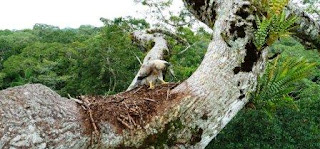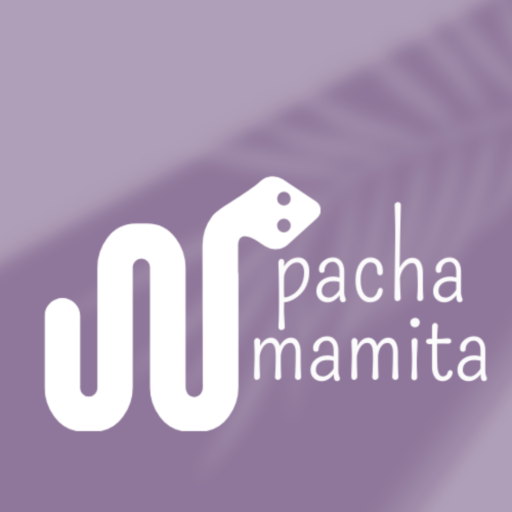![]()
 |
| PHOTO: Enrique de la Montaña/SIMBIOE |
After a recovery process that took more than three weeks, during which she was under observation and regaining weight at the Guayllabamba Zoo, a couple of weeks ago, a harpy eagle named Airobain was reintroduced into her habitat in the Cofán commune of Zábalo.
The journey of Airobain (from the mountain, in the Paicoca language), the strongest bird of prey in the world, began last December when hunters from Zábalo found this chick that had fallen from its nest at a height of more than 35 meters. They picked it up and after an evaluation by the team of the Harpy Eagle Conservation Program of Ecuador, it was decided that it was necessary to transfer it for its recovery. The transfer took place in mid-January.
A few days ago, in the port of Las Mercedes on the Aguarico River, very early in the morning and while the first team was preparing to load all the material into the canoe, there was excitement at the culmination of this reintegration process, which is the 3rd carried out by the PCAHE. After going up the Zábalo River, a trip that was made in several boats until reaching the place where the nest was located. The Zábalo River is a beautiful river, but the level was a little low and there were some crossed sticks so we had to make some stops so that Ramón, the park ranger, could cut the crossed sticks so we could continue on our way.
Fredy Criollo, our Cofán guide (A'i in their language), was of valuable help in getting through the jungle.
This first group that traveled to the base of the imposing ceiba tree (Ceiba pentandra) was divided into two, the first was in charge of making sure that the entire system for climbing the tree was ready for when Airobain arrived days later with the second group. The process began by launching an arrow with a crossbow to place the climbing routes. We used this effective system thanks to our teacher Alexander Blanco. Three routes were opened, one for climbing, one for safety and another to climb Airobain. It was necessary to install these routes safely, so Santi was essential, since we had to reach a height of 32 meters.
Returning to camp at dusk, Alex had to make the most of every moment to work, so he was preparing his rope for the next day.
At dawn the next day, members of the second group left from the port of Dureno, taking Airobain to the canoe along its wide beach of ball stones or spark stones; it was a hard road.
Airobain traveled calmly at all times, as if confident that what those strangers were doing was going to be good for her.
The slow and delicate process of ascension began. Upon reaching the point of reinsertion, the ceiba stood out from the canopy of the Amazon forest. The branches of the giant ceiba are adorned with Bromeliads and a large population of lizards also inhabit the upper parts of the ceiba.
We had to be very patient in setting things up to let Airobain out. After placing the box in the nest ready for Airobain to come out, all that was left to do was wait… …and wait, while I watched from behind to see if Airobain would decide to come out. He didn’t let us down and after a few minutes of hesitation he settled into his nest.
Before leaving we were able to see how Airobain made several jumps and flapped his wings to move along the branches outside the nest.
In this reintegration process, members of the PCAHE and their collaborators, park rangers from the Ministry of the Environment, La Televisión staff, and members of the Navy and the Cofán community worked as a team.
Majestic, Airobain dominates the entire forest from its privileged position. The spirits of the forest are now resting peacefully.
